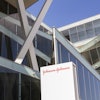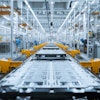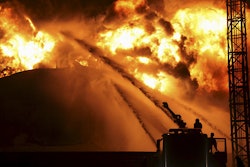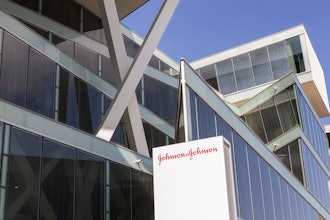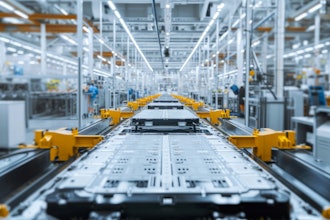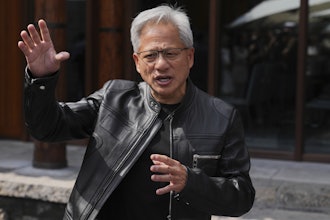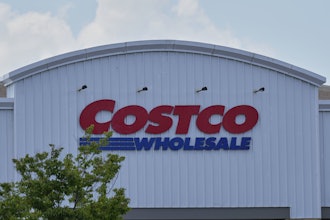INTRODUCTION
As the days of cheap and predictable energy costs rapidly recede, the impact of high energy prices on facility budgets
is heightening demand for more efficient lighting solutions. And for good reason. Today, lighting-related energy use
consumes upwards of 38%1 of an industrial facility’s total energy budget and with the ever-increasing cost per kWh of
energy, that total bill continues to rise dramatically. As a result, energy efficiency is now a top priority at industrial
facilities around the world and a key criterion for capital investment decisions.
It is this focus on efficiency that is at the heart of the
rapidly growing adoption of LED-based lighting solutions
within industrial facilities. LEDs are the most energy-
efficient, cost-effective and safe illumination choice on the
market today, with documented savings in the 50% to 90%
range over legacy lighting alternatives.
The savings potential for industrial LED lighting solutions,
however, varies widely by manufacturer, application, and
facility-specific variables (hence the 50% to 90% range).
This paper provides the basic framework for navigating the
industrial LED lighting market and making the best choice to meet your project goals.
EFFICIENCY BY TYPE OF INDUSTRIAL LED LIGHTING
Industrial LED lighting solutions have varied savings opportunities, performance, reliability and lifetime characteristics, and
fall into the following categories:
Basic LEDs are a more energy-efficient illumination source that deliver one-time energy reductions versus legacy lighting
— high-intensity discharge (HID) or high-pressure sodium (HPS). There is no opportunity for additional energy savings
beyond the simple wattage reduction.
Adding sensors to basic LED fixtures can increase energy efficiency; however these add-ons (occupancy or daylight
harvesting sensors) are single-purpose tools, typically with fixed settings that control the on or off state of a fixture or
group of fixtures. For energy-savings purposes, it is important to note that most fixtures cannot accommodate both
occupancy sensors, dimming and daylighting, too, nor are they adaptable to meet a facility’s changing operational needs.
Choosing the Right LED Product
for Industrial Lighting Applications
Basic LED Fixtures
These fixtures incorporate energy-efficient LEDs for illumination, but are otherwise
functionally equivalent to legacy HID- and HIF-based fixtures. Dimming may be an option
— sold separately — and must be manually configured light-by-light. After initial installation,
lighting use is fixed. The only control available is an on/off switch or a circuit breaker.
Basic LED Fixtures
with bolt-on sensors
This multi-vendor configuration couples basic LED fixtures with after-market occupancy or
daylight sensors to achieve greater energy efficiency by turning lights on and off.
Intelligent
LED Systems
These systems integrate intelligent LED fixtures (with occupancy and daylight sensors and a
small computer) and wirelessly network them while providing a software management and
reporting interface. They leverage the inherent capabilities of LEDs (for example, instant
on/off and dimming) to maximize energy savings and provide facility management with
unprecedented control and flexibility over how lighting is used throughout the lifecycle of
the lighting installation.
www.digitallumens .com
+1 (617) 723-1200
History suggests that the value of a one percentage point
reduction in energy use will continue to rise with each
passing year, rewarding the ultra-eff icient with signif icant
bottom-line savings and a growing strategic advantage
over less-eff icient competitors.
2 Digital Lumens
Choosing the Right LED Product for Industrial Lighting Applications
So while these aftermarket add-ons enhance basic LED lighting fixtures’ functionality, the additional savings fall short of
delivering maximum potential savings.
The most energy efficient category of industrial lighting, intelligent LED lighting systems, is the only category of lighting
that routinely delivers savings of up to 90%. These fully integrated solutions leverage software controls, built-in occupancy
and daylight harvesting sensors, and wireless networking, to provide facility managers and engineers with an unprecedented
level of control and flexibility over lighting usage. And, these fixtures cost about the same as a basic LED fixture plus
add-on sensor. The net result is dramatic energy efficiency savings throughout the lifecycle of a lighting installation.
Figure 1: Comparing Energy Costs by Fixture Type
COMPONENTS OF EFFICIENCY
There are two parts to achieving the highest levels of energy efficiency and savings. First is the efficiency of the
underlying illumination source and the overall design of the lighting fixture. By wide margins, a well-designed LED
solution outperforms all other light sources in:
• Energy efficiency and efficacy of the lamp source because it requires fewer watts to produce high levels of
light output;
• Lamp life because high-quality industrial LED fixtures have lifetime ratings of 50,000+ hours, compared to 20,000
or fewer hours for traditional sources;
• Maintenance because LEDs require little or no maintenance;
• Thermal impact because they run at lower wattage and are more efficient in converting electricity into
illumination, they generate much less heat than conventional industrial lights, which is a crucial consideration in
refrigerated, frozen and climate-controlled environments;
• Cycling because frequent on/off cycling only extends LEDs' useable lifespan.
$50,000
$40,000
$30,000
$20,000
$10,000
$0
$40,730
$14,016
$10,876
$6,730
HIDs
Basic LEDs
Basic LEDs w/sensors
Intelligent LEDs
Annual Lighting-Related Energy Costs:
100 Fixtures @ $.10/kWh
Digital Lumens 3
Choosing the Right LED Product for Industrial Lighting Applications
The second part of the efficiency equation, which only intelligent lighting systems address, is the ability to control all
variables to eliminate unnecessary use of light. Since lighting use is synonymous with energy use, it only makes sense
that eliminating excess light is the single most important driver of additional savings. In simplest terms, the way to reach
maximum energy efficiency is to use:
• Lighting only WHEN needed
• Lighting only WHERE needed
• Exactly the right AMOUNT of light (for example, no over-lighting to keep lights warm in a freezer or because of the
inability to control each light individually)
This requires a lighting system with the flexibility to control the variables that drive when and where lighting is used, through
occupancy sensors, daylight harvesting sensors, and the ability to schedule lighting to match needs of different shifts.
FLEXIBILITY AND ITS IMPACT ON SAVINGS
Achieving maximum energy savings requires a lighting system that provides maximum flexibility around all the elements
that drive lighting use.
• Are the lights able to sense whether they should be on or off — based on activity in the area or available ambient light?
• Can lights be turned off or dimmed to any level in areas that aren’t used?
• Can light output levels be customized so that on isn’t necessarily 100% if that much light isn’t required?
• Can lights be turned off when a space is unoccupied and instantly back on when needed?
• Can lighting settings be altered to meet specific
operational needs (for example, facility cleaning or
maintenance; differing work patterns based on shift,
day of week or holiday schedules; or quickly changing
system settings to manage an emergency)?
• Does the lighting system support ongoing lighting
optimization?
• Can lighting settings be modified to ensure alignment
between a facility’s changing requirements as its
business needs evolve?
This level of flexibility cannot be attained via lights that require a 30-foot scissor lift to manually change the settings on
hundreds of fixtures or, alternatively, add-on occupancy sensors. Facility personnel are simply too busy to make this
a viable solution. Intelligent lighting systems solve this problem by providing locally intelligent luminaires and centrally
managed software controls for fine-tuning system settings.
EFFICIENCY IN ACTION
Key drivers of energy savings are occupancy, fixture timeouts — the amount of time a fixture is left on after an area is
vacated, and dimming. If lighting is used only when areas are occupied and lighting levels are matched to operators’ needs,
the energy savings are significant. Rather than leaving traditional high-intensity discharge (HID) lights on 24 x 7 at 100%,
which costs $40,730 per year (100 fixtures & .10¢ kWh), that number can be driven down to $6,730 with an intelligent
LED lighting system that is actively managing these variables (see Figure 1, previous page).
Dramatic improvements in energy eff iciency cannot be
attained via a 30-foot scissor lift, manually changing the
settings on hundreds of f ixtures. Intelligent lighting systems
solve this problem by providing locally intelligent luminaires
and centrally managed software controls for f ine-tuning
system settings.
4 Digital Lumens
Choosing the Right LED Product for Industrial Lighting Applications
Occupancy
At most industrial facilities, occupancy levels are significantly lower than most people expect. This doesn’t mean that a
facility isn’t busy; it just means that every square foot of the facility isn’t necessarily occupied simultaneously. For lighting
purposes, this means that the entire facility doesn’t require 100% light levels all the time. The word ‘occupancy’ in this
context is used to refer to how much a particular space is being used and therefore requires lighting. An alternative term
is ‘total lighting time.’ At very busy facilities, space occupancy is rarely above 30% and frequently less than 10% (see Figure 2,
below). So by turning LEDs off or dimming them when a space is vacated, facilities lock in significant energy and real-dollar
savings due to lower overall total lighting time.
Figure 2: The LightRules Occupancy Report
Timeout Settings
Controlling the amount of time a lighting fixture remains
on after an area is vacated may seem a minor point,
but it can have a major impact on energy savings, as
illustrated in the Timeout Settings Chart (see Figure 3)
which shows the energy costs of a single light for a
single year and how different settings drive different
costs. Take those individual fixture energy costs and
multiply by 100 fixtures and you’ll see that the savings
scale:
• 100 fixtures with 30-second settings will cost $3,500/yr
• 100 fixtures with 60-second settings will cost $5,700/yr
• 100 fixtures with 90-second settings will cost $7,300/yr
So the questions are: Exactly how long do lights need
to be on after an area is vacated? Two minutes? Thirty
seconds? And, how do you make changes where and
when needed?
Figure 3: Sensor Delays and Energy Savings
Digital Lumens 5
Choosing the Right LED Product for Industrial Lighting Applications
Dimming
There are times and applications where turning lighting off completely is not ideal. For those situations, dimming provides
a viable energy-saving alternative. “Off” in this sense may not mean totally dark, but rather “night-light” illumination levels
of, say, 10% to 20% for individual fixtures or groups. Dimming strategies are typically used in locations such as cross-aisles
and back corners for security and comfort. Since dim is always more efficient than fully on, managing illumination levels can
also make a significant contribution to bottom-line savings.
A CLOSER LOOK: HOW FLEXIBILITY MAXIMIZES ENERGY EFFICIENCY
The facility diagram (see below, Figure 4) shows how having an intelligent lighting system with the flexibility to provide
lighting based on occupancy, while controlling timeouts and dimming levels for ‘active’ and ‘inactive’ settings, drives energy
costs and how they vary significantly. In this facility, lighting energy use for each area are as follows:
• Dry storage — 700 kWh per year
• Cold storage — 260 kWh per year
• Refrigerated storage — 1,000 kWh per year
Additionally, while not calculated into this scenario, the fact that the lights are only on when needed and run at a much
lower wattage than conventional HID or HPS lamps, creates dramatic thermal savings for chiller operations.
Figure 4: Intelligent Lighting Based on Occupancy
DRY STORAGE
Racked Aisles
Active: 100%
Inactive: 0%
Timeout: 1.5 mins
Energy: 700 kWh/light/yr
COLD STORAGE
Racked Aisles
Active: 75%
Inactive: 0%
Timeout: 0.5 mins
Energy: 260 kWh/light/yr
REFRIGERATED STORAGE
Cross Aisles
Active: 100%
Inactive: 10%
Timeout: 3.0 mins
Energy: 1000 kWh/light/yr
Facility Diagram
6 Digital Lumens
Choosing the Right LED Product for Industrial Lighting Applications
MEASUREMENT, VERIFICATION AND ONGOING FINE TUNING
A critical part of any energy efficiency initiative is measurement and verification, and lighting is no exception. You must
be able to review and analyze the system’s energy use at whatever level of detail is required, both for facility management
and for utility partners. You should also be able to document lighting use on a fixture-by-fixture, group of fixtures, or
facility-wide basis. Integrated intelligence and reporting enables facility personnel to review performance metrics without
resorting to guesswork or manual observations, making it a key criterion for lighting system evaluations.
That same data is essential for ongoing fine-tuning, providing actionable intelligence on how a lighting system is
performing, so that the team can determine and implement modifications that can further improve energy efficiency. The
goal is to periodically review and update lighting settings to match changes in facility usage patterns. For example, when
a facility first deploys a new lighting system, the tendency is to use very conservative timeouts and dimming levels, and
gradually phase in adjustments. At initial commissioning, timeouts may be set to two or three minutes. But, over time
those settings can be gradually reduced to 30 seconds to lock in savings once the operators in the facility are comfortable
with the lights’ behaviors. This provides a smooth transition for facility staff, without compromising safety, productivity or
comfort and optimizes savings, as the following chart shows (see Figure 5):
Figure 5: The LightRules One Month Energy Usage Report
Note the January 1 date and how modest changes to sensor timeouts and
dimming settings lead to substantial reductions in energy usage.
January 1
Digital Lumens 7
Choosing the Right LED Product for Industrial Lighting Applications
RELIABILITY: AN IMPORTANT CONSIDERATION/CRITERION FOR EVALUATIONS
There are several other important criteria for evaluating industrial lighting solutions that are critical with the switch to
LEDs. They include:
SUMMARY
Choosing the right industrial LED lighting solution to meet your specific needs may seem daunting, but with a solid
understanding of the LED options available, this process can be greatly simplified.
First and foremost, understand the range of LED offerings for industrial applications — from basic LED fixtures, basic LED
fixtures with add-on sensors, to intelligent LED lighting systems. Then, identify which of these is most appropriate for the
performance and energy-efficiency goals you have established for your organization. From an energy-savings perspective:
• Basic LED solutions, which improve upon legacy alternatives but perpetuate a simplistic and costly approach to
lighting with fixtures left on all or most of the time, are at one end of the spectrum.
• Basic LED fixtures with add-on sensors are a reasonable mid-point, but still fall short of the energy-efficiency
results set by intelligent lighting systems and carry double product and installation costs.
• Intelligent LED Lighting Systems maximize energy efficiency by marrying an energy-efficient illumination source
with integrated intelligence and the ability to respond to the variables that drive lighting energy use. This approach is
the easiest to deploy and operate, with similar first costs as basic fixtures with add-on sensors.
In short, Intelligent LED Lighting Systems provide the smartest, most efficient lighting alternative available to industrial
facilities today. Currently in use in a wide range of demanding industrial applications, from temperature-controlled
warehousing to manufacturing and retail, they are routinely delivering energy savings of 80% to 90% over legacy lighting
solutions. They accomplish this by treating lighting as a managed asset that can be easily tailored to meet specific
operational needs, providing the highest levels of efficiency and savings.
ABOUT DIGITAL LUMENS
Digital Lumens develops Intelligent LED Lighting Systems that are proven to reduce industrial customers’ lighting-
related electricity expenses by up to 90%. With this System — smart lights, wirelessly networked together and centrally
controlled — the company is defining a new class of networked LED lighting that maximizes both delivered light and
energy efficiency. Digital Lumens has been recognized as a 2011 World Economic Forum Technology Pioneer and a 2011
Global Cleantech 100 Company.
• Fixture Longevity With lifetime ratings in excess of 50,000 hours — more than twice that of alternative lamp
sources — LED lighting fixtures need to be durable and designed with longevity in mind.
• Warranty With LED-based systems, a five-year manufacturer’s warranty is recommended, given
the lifespan of these systems. Make sure that the warranty covers all of the hardware
components of the system, as many lighting manufacturers only provide a pass-through
warranty on key components such as the power supply and sensor, leaving the user with
essentially no overall warranty.
• International Safety
Certification
Best practice facilities are raising the bar on certifications, requiring not only component-
level approvals, but UL/CE listing of the entire fixture as well. During evaluations, it is
important not to assume that because one of these certifications exists, the others will be
there as well. The highest quality manufacturers design their products to meet international
standards of safety and quality.
1 Source: Energy Information Administration — CBEC Survey (2003).
All Rights Reserved © 2012
Digital Lumens Incorporated
Subject to change without notice.
DOC-000075-00 Rev A 03-12
[email protected]
110 Canal St, 7th Floor
Boston, MA USA 02114
+1 (617) 723-1200
Choosing the Right LED Product for Industrial Applications
If you’re using HID or HPS fixtures, your lighting energy costs are probably in the range of $1 per square foot per year -- meaning that your 200,000 square foot facility likely costs $200,000 annually.
Latest in Home
ABB to Invest $110 Million in 4 U.S. Plants
September 17, 2025
Nvidia CEO Huang Says He's Disappointed by China Chip Curbs
September 17, 2025
